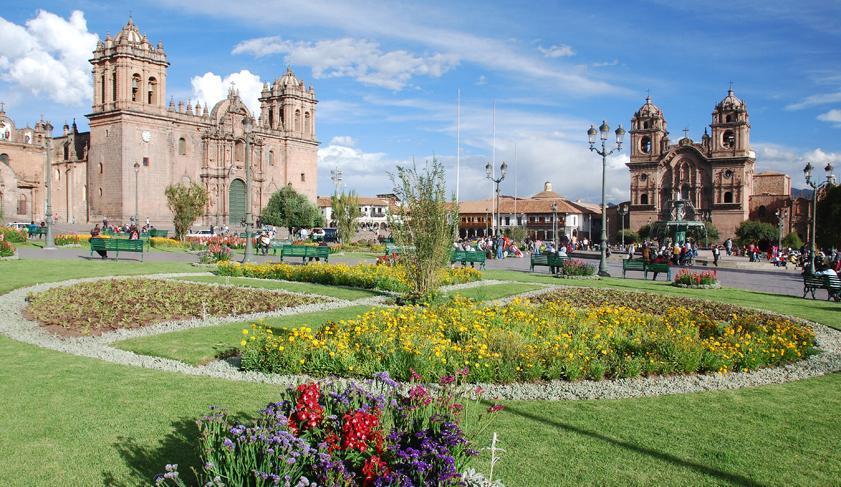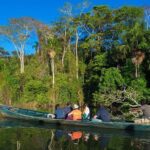As Kenny, of Aussie portaloo fame once said, toilets ought to be the first thing that people think about when they’re organising things, but it’s not. Considering how often travellers in third world countries get diarrhoea, you’d also think it would be a top priority when you’re travelling. Wanting to get to the loo nearest you rather rapidly must be a common enough occurrence. So you’d think it would be bog standard for guide book maps to feature the location of public toilets, but no. You’d also expect the pocket language guides would have ‘where’s the toilet?’ high on their list of frequently used phrases. We had three, and you really had to search for it in all of them. What the Lonely Planet travel guide for Peru did have was a list of medications you should bring that was so extensive; you’d be up to your weight limit for flights if you brought them all. Yet the travel doctor we consulted only prescribed two: both for diarrhoea, with written instructions on how to deal with four different levels of the infliction. He knew what it was that we really needed to have under control.
My first experience of toilets in Peru was not auspicious. We’d flown direct to Cuzco. There was a queue for the ladies’ at the airport, yet everyone seemed to be avoiding the first cubicle and waiting for the other two. I put my head in the door, nothing suspicious, so I lifted the seat cover. I was greeted with brown. There was a smell in there that will outlast religion, as Kenny would say. I very rapidly put the lid back down and pushed the button to flush the toilet. Nothing happened. So there is no running water, I concluded. That explained the two litre bottle of drinking water by the taps that other travellers were using to wash their hands. Gerard assured me that the men’s didn’t even have that.
You can imagine that after that experience, we were both very relieved to find that our hotel in Cuzco had an en suite. Our tour company had advised us that the ‘comfortable’ level of accommodation we had chosen wouldn’t necessarily have an en suite. It’s normally the one thing Gerard insists on. The possibilityof diarrhoea was not the only concern; we’re at an age when bladder control is not what it used to be. He often needs to go to the toilet during the night, and does not want to end up lost or in the wrong room. I generally make it through the night, even if it is a bit of a sprint in the morning. However there was no way we could afford to stay in a five star hotel; and besides, we reasoned, if we wanted to experience the ‘local ambience’, we had to be prepared for the ‘erratic services’ that our tour company warned us about.
We’d decided to fly direct to Cuzco, at 3326m above sea level, to get used to the altitude. We’d read up on altitude sickness, and decided that a couple of days easy going before the tour proper began would get us one step ahead. We weren’t surprised to find ourselves more than a little out of breath at first, having to stop several times returning to the hotel from our orientation walk around Cuzco. We drank a leisurely cup of coca tea in the lobby, and feeling quite recovered, tackled the flight of stairs up to our room on the next level. We made it halfway up before stopping for a breather. Then I needed to stop another two times before collapsing on the bed for an hour. We took a number of these little naps over the next few days, but we weren’t worried: we were sure that it would pass. We drank plenty of coca tea (0.02% cocaine) which certainly helped, and drank plenty of water, another known cure. We were indeed most grateful that the en suite was only a few steps from the bed. Yet we never ‘got over it’. Gerard and I regularly stopped to ‘admire the view’ from the steps up to our room, and I could barely manage any more than about ten steps uphill without stopping for breath when we were walking around Cuzco.

Our view from the hotel
What made this particularly galling is that there was a superb bakery, El Buen Pastor, just around the corner and up a hill. It would have taken us less than 5 minutes to get there had it been in Wellington, but it was nearer to 20 minutes in Cuzco. At least this had the advantage of deterring some tourists, whose tactic for coping with altitude seemed to be to stop for a chat with every street peddler along the way. This must explain why every second local in Cuzco was either hawking some tourist knick-knack, or offering to polish your suede shoes, or wanting to pose for your camera in exchange for a tip. It meant that El Buen Pastor usually had plenty of space for us between the parties of people plotting their next activity over a leisurely espresso and patisserie! Unfortunately, it also took about 20 minutes to get back to the hotel. At that altitude fabulous sunny days mean freezing cold nights. And cold has another effect: a sudden drop of temperature invariably tempts my bladder to let go right then and there. I must admit, it didn’t make me the most adventurous traveller. ‘But do they have a functioning toilet?’ was the question I often found myself asking our tour guide, who was also our son, Eoin, whenever we were discussing where we would go.
However, I should say, in all fairness to Lonely Planet, when I checked the Peru guide on my return home, that I did find a paragraph on toilet etiquette in Peru: towards the back, buried deep in all the boring stuff. It may well also have been somewhere in the thirty-six pages of essential reading to have mastered before you go, that the tour company so thoughtfully provided, but I missed it there as well. Eoin got rather huffy when I said someone might have told us not to put toilet paper in the toilet, after I managed to flood one of the restaurants we were visiting. He did mention it in the forty five minute orientation he gave at the beginning of the tour, he insisted. Besides, he opined, isn’t the bucket full of toilet paper next to the toilet a bit of a give away? Well, it would be if you are used to visiting the men’s toilets, I suppose, but waste containers in the ladies are not that unusual….
That public toilets are of variable standard perhaps goes without saying. What I found most difficult to contend with was not the occasional absence of the toilet seat, or the more frequent lack of flushing mechanism, or the build up of debris from being infrequently cleaned. We have the same issues here in New Zealand. What I found perplexing was the national pastime of hiding the toilet paper. Sometimes it was in the cubicle. Not often, but often enough to fool you into complacency if you didn’t spy any on the way in. Sometimes the attendant would reluctantly give you a couple of pieces ration in exchange for your fee, but the payment of fees did not in any way guarantee the provision of toilet paper. Sometimes there was a tidy pile of two- piece rations on the table next to the donations jar, so you could collect one and only one on the way in, under the watchful eye of the attendant. Sometimes the toilet paper would be located up high, or in some other obscure place where you wouldn’t have a hope of finding it unless someone in the know was in the queue in front of you. At Machu Picchu, Peru’s premier tourist attraction, with over 2000 visitors a day to a 5 square mile site, there is one toilet block. You can help yourself to as much toilet paper as you like, if you can find it. The roll is attached underneath the admission desk on the way in, when you are distracted with finding the change to buy your ticket. My guess is that the rationale is that if you can’t find the toilet paper, you can’t flush it down the loo.

At least there were a good number of toilets in the block at Machu Picchu: we only had a ten minute wait. At Cruz del Condor in Colca Canyon, there were the sum total of two toilets for women. The Lonely Planet Guide to Peru has a full page map of Machu Picchu and four pages of description without one mention of the toilets. On the Cruz Del Condor page, it did mention that you might not get to see the condors, but not that it might be because you spent the whole time queuing for the toilet!

So why bother queuing? Why not just find yourself a discreet and convenient spot somewhere as you would in New Zealand? Indeed the tour company pre-tour information did comment that the crew may chose not to stop at public bathrooms along the way, as they may ‘leave a lot to be desired’ and ‘the great outdoors is usually far better’. So I was expecting to stop along the roadside to ‘go behind a bush’ as they so prosaically phrase it. The only problem was that there was rarely a ‘bush’ to go behind. In the desert there may be the occasional cactus. On the passes there were usually some rocks around, but on the high altoplano there wasn’t anything but plenty of passing traffic on the Pan American highway.
Our strategy of arriving early at Cuzco paid off when we visited Machu Picchu. At an altitude of only 2430m, I could make it about 20 steps before having to stop for a breath; but Emilia, the local tour guide, was stopping more often for Robert, the most recent arrival. I knew that Lake Titicaca at 3830m would be more of a challenge. We arrived at a decidedly steep looking Amantani Island, and our local guide, George, assured us it’d take about 20 minutes at a leisurely pace to get to the Coloquicachi community where we were being billeted. George stopped once for us on the way up. I lost count of the number of times I stopped. I felt consoled that Jane, one of the fit young things that had trekked the Inca Trail also had to stop, insisting that it was not the altitude, it was the midday heat. Turned out, Coloquicachi was the highest community up the track, and our host lived in the house that was further up than any other in the community!

Note the stairs in the background
There is no electricity supply on the island. Some homes do have a solar panel, and our room did have an electric wire going across to a light bulb, but that was purely for decoration. There was a candle, but no matches, until the father came up to light the candle some time after it became dark. There was a ‘staircase’ going up to our room. It did have two or three stairs, and then it became more like a ladder. One ‘step’ was a drop of 40cm, another two drops of 30cm. The toilet was outside the house. Even though my brain was deprived of oxygen, I still managed to work out that, to make it to the long drop at night, I’d have to use my hands to cling to the hand railing to minimise the jarring going down, which left me with nowhere to put a torch but between my teeth, and even then I’d be lucky to get there in time. I considered camping out by the long drop, but I knew it was going to get very cold. Our hosts had lit not one, but two candles in our honour. Their first language was Quechua, but they were fluent enough in Spanish. We weren’t. It was too cold even to remember the few phrases I’d learnt by heart precisely for this sort of situation. Between us we’d managed to leave all three phrase books back in Puno. We must have been the worst guests they’d ever had. The only thought in my head was of our toilet predicament. I talked about that to anyone who would listen, but got very little sympathy. Then Claire said she’d found a chamber pot under her bed. We checked when we got back to our home stay, and there it was! I have never been so glad to see a potty in all my life!
I must admit, though, that things became much more civilised after we got to Arequipa. Not only was there a steep decline in the number of street hawkers at the lower altitudes but we started finding notices requesting that we refrain from putting toilet paper in the toilet, in English as well as Spanish!
So yes, we did experience the ‘local ambience’, and survived the ‘erratic services’, and even managed to entirely avoid the diarrhoea that we were dreading. Overall, though, I am most grateful to Marion for the best travel tip anyone ever gave me: never chuck out your old knickers, save them for when you’re travelling, so you can bin them as you go. I should add, though, that if you end up bringing some home, make sure that you put them in the same luggage as any souvenirs that you have to show MAF/ DoC / Customs on your return. You’ll be amazed at how quickly they wave you on!
Visit Machu Picchu, the Colca Canyon, Lake Titicaca and Arequipa on Tucan Travel’s Peru Completed Adventure Tour
Spread the love



